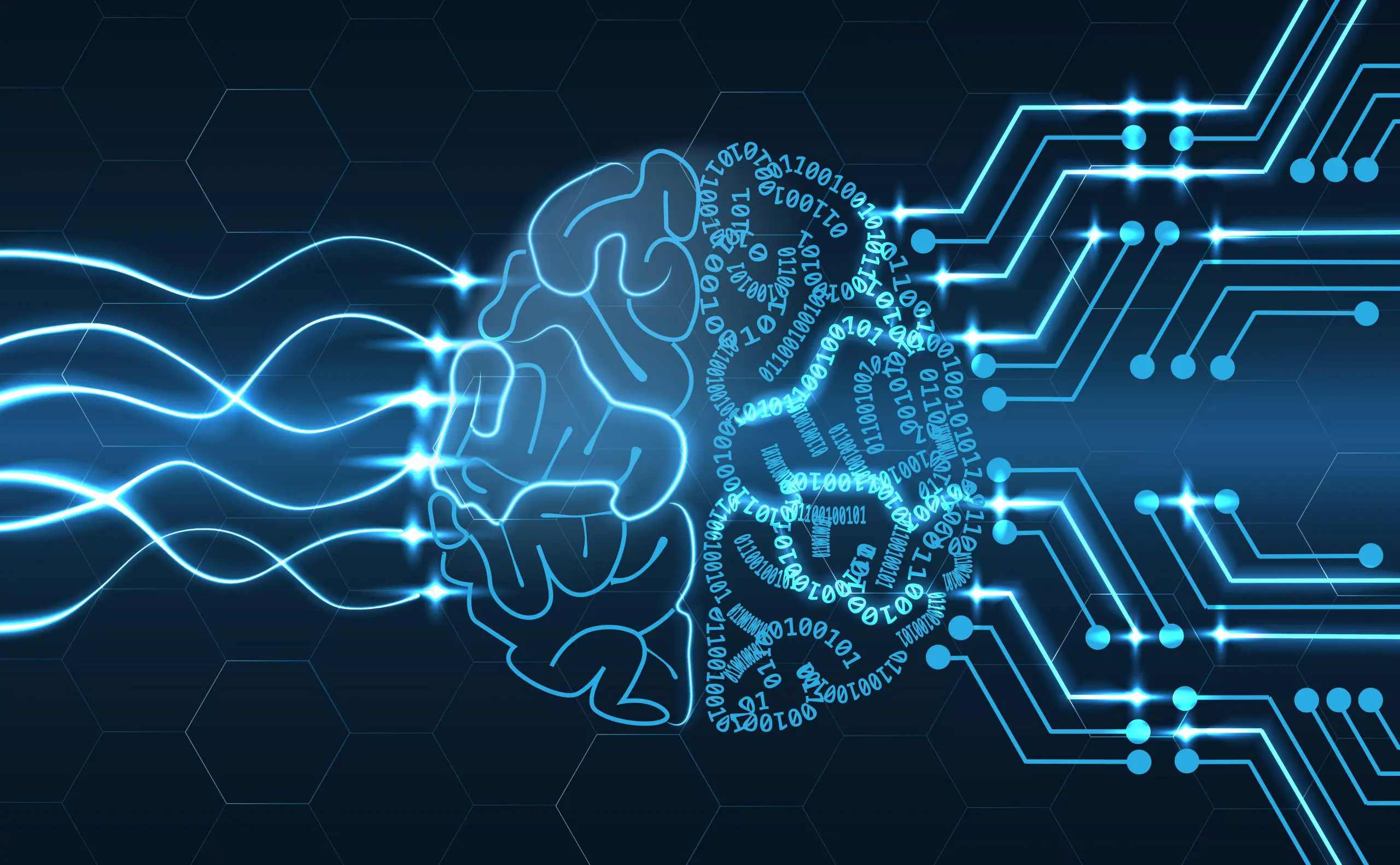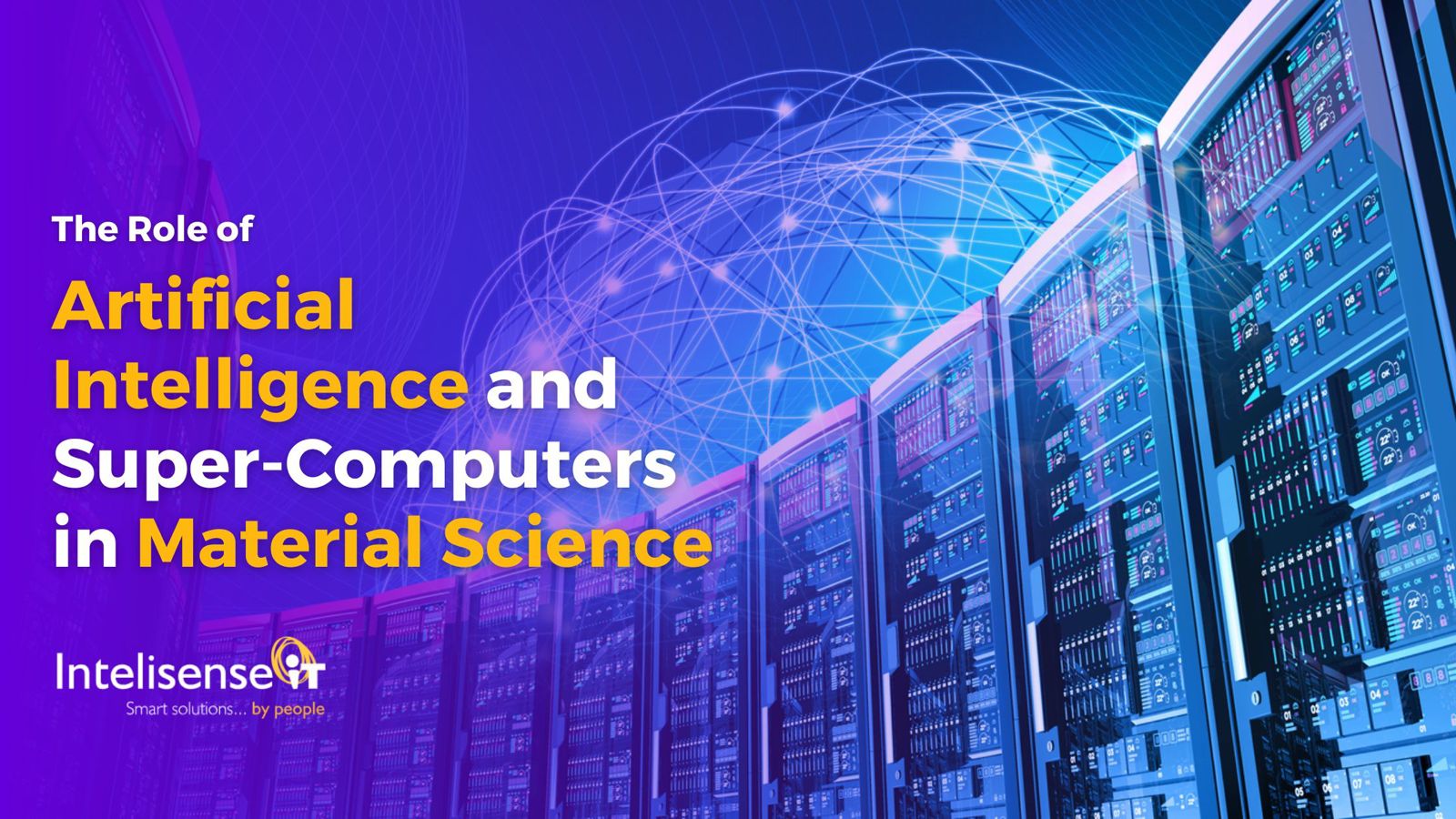Accelerating Scientific Discoveries: The Role of AI and Supercomputers in Material Science
Scientific research has witnessed a paradigm shift with the advent of advanced AI and high-performance computing (HPC), empowering researchers to accelerate the pace of discovery in unprecedented ways. This convergence of technologies has particularly revolutionised material science and this blog post aims to explore the profound impact of AI and supercomputers on accelerating scientific breakthroughs, with a specific focus on their benefits to material science.
The Power of AI in Scientific Research

Data Analysis and Pattern Recognition
AI algorithms have the remarkable ability to swiftly analyse vast amounts of data, recognising intricate patterns that might elude human researchers. In material science, this capability is invaluable for identifying novel materials with specific properties, which could take years using traditional methods.
Predictive Modelling
AI facilitates predictive modelling by simulating the behavior of materials under various conditions. This predictive capability expedites the screening of potential materials for specific applications, significantly reducing the time and resources required for experimental trials.
Supercomputing: Unleashing Unprecedented Computational Power
High-Performance Simulations
Supercomputers are indispensable for conducting complex simulations that demand immense computational power. In material science, these simulations enable researchers to explore the behavior of materials at atomic and molecular levels, unveiling crucial insights into their properties and potential applications.
Accelerated Material Design
By harnessing the colossal processing capabilities of supercomputers, researchers can expedite the design of new materials with tailored properties, leading to breakthroughs in fields such as energy storage, electronics, and structural materials.
Synergy of AI and Supercomputing in Material Science

Enhanced Efficiency in Material Discovery
The synergy between AI and supercomputing amplifies the efficiency of material discovery processes. AI algorithms can swiftly analyse massive datasets, while supercomputers power the intensive simulations required to validate the potential of new materials, ultimately expediting the entire research cycle.
Facilitation of Multiscale Modeling
The collaborative prowess of AI and supercomputers empowers researchers to engage in multiscale modeling, comprehensively exploring the behavior of materials from the atomic level to macroscopic scales. This holistic approach offers a profound understanding of material properties and behaviors, paving the way for transformative advancements in material science.
Case Study: Microsoft and PNNL Collaboration
As exemplified by a groundbreaking collaboration between Microsoft and the Pacific Northwest National Laboratory (PNNL), demonstrating the remarkable potential of this partnership.
Accelerating Material Discovery
In a groundbreaking collaboration, Microsoft and PNNL leveraged advanced AI and HPC to expedite the discovery of a new battery material, a process that traditionally takes years. By harnessing the Azure Quantum Elements service, AI algorithms swiftly identified 500,000 stable materials in a matter of days, paving the way for a revolutionary breakthrough in material science.
Unprecedented Speed and Precision
Through the collaborative efforts, 32 million potential inorganic materials were rapidly narrowed down to 18 promising candidates for battery development in a mere 80 hours. This unprecedented speed and precision in material screening demonstrate the transformative impact of AI and HPC on expediting solutions for urgent sustainability and other global challenges.
Eliminating Trial and Error
The traditional trial-and-error approach in materials synthesis was eliminated, allowing scientists to focus on testing the best candidates for practical applications. This accelerated process not only significantly reduces the time required for discovery but also fosters exploration of a broader range of material possibilities.
Future Prospects and Collaboration
The collaboration between Microsoft and PNNL signifies the immense potential of AI and HPC in accelerating scientific discovery across various fields. With a focus on energy security and sustainability, this partnership serves as a testament to the transformative impact of advanced technologies on material science.
Microsoft's Pioneering Role in Future Advancements

Quantum Computing and Material Science
Microsoft’s Azure Quantum Elements service offers a cloud computing system specifically designed for chemistry and materials science research, with a vision towards eventual quantum computing applications. This pioneering initiative not only accelerates scientific discovery using traditional computers but also lays the foundation for future advancements in material science through quantum computing.
AI-Driven Material Evaluation
Microsoft’s AI tools, trained specifically for chemistry, have emerged as a catalyst for accelerating the evaluation of material candidates, significantly reducing computational time and streamlining the discovery process. This technology holds immense promise for not just battery systems but a wide array of materials research, enhancing accessibility for research communities worldwide.
Collaboration for Scientific Acceleration
The enduring collaboration between Microsoft and PNNL exemplifies a commitment to accelerating scientific discovery, leveraging the power of computational paradigm shifts in chemistry and material science. This collaborative endeavour is poised to usher in a new era of acceleration, with immense potential to address critical global challenges through transformative material discoveries.
Real-World Implications and Future Prospects
Sustainable Materials Development
The accelerated pace of material discovery facilitated by AI and supercomputing holds immense promise for the development of sustainable materials, crucial for addressing global challenges such as climate change and resource scarcity.
Tailored Material Solutions
The ability to rapidly design and test materials with specific properties opens up avenues for tailored solutions in various industries, ranging from advanced manufacturing and aerospace to healthcare and renewable energy.
Continued Innovation and Collaboration
As AI and supercomputing capabilities continue to advance, the potential for transformative discoveries in material science grows exponentially. Moreover, collaborative efforts between researchers, industry partners, and governments can further maximise the impact of these technologies on scientific progress.
In conclusion, the convergence of AI and high-performance computing has ushered in a new era of scientific discovery, particularly in material science. The groundbreaking collaboration between Microsoft and PNNL serves as a testament to the transformative impact of advanced technologies on accelerating the pace of material discovery, offering a glimpse into the immense possibilities for addressing global challenges and shaping the future of scientific research.




